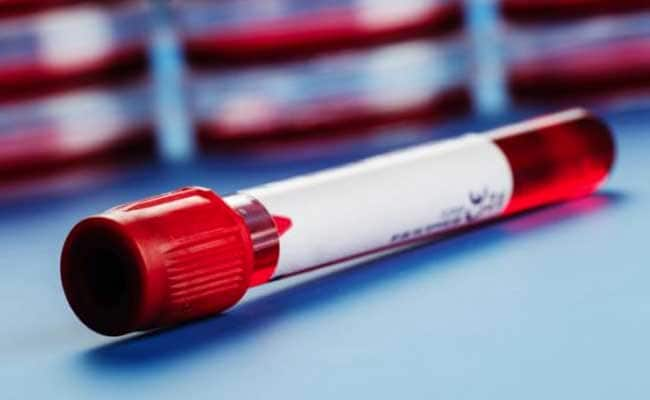World Cancer Day 2021: Most blood cancers begin in the bone marrow where blood is produced. The three most common blood cancers are lymphoma, leukaemia and multiple myeloma.

World Cancer Day: Blood cancer can be managed with treatments such as chemotherapy, radiation therapy
HIGHLIGHTS
- World Cancer Day: Multiple Myeloma develops in the bone marrow
- Lymphoma affects lymphatic system, which helps in getting rid of toxins
- Leukaemia occurs in bone marrow and gradually spreads to the bloodstream
World Cancer Day 2021: This day is observed on February 4. Blood cancer originates in the blood forming tissues when abnormal blood cells start growing out of control, thereby interrupting the functioning of the normal blood cells. The normal blood cells help strengthen the immune system by fighting infection and producing new blood cells. Most blood cancers begin in the bone marrow where blood is produced. The three most common blood cancers are lymphoma, leukaemia and multiple myeloma. The common symptoms include weakness, shortness of breath, minimal injury resulting in fractures, excessive or easy bruising, bleeding gums, recurrent infections and frequent vomiting sensations. Blood cancer can be managed with treatments such as chemotherapy, radiation therapy and stem cell transplant.
World Cancer Day 2021: Types of blood cancers, warning signs and treatment
Multiple myeloma
Multiple Myeloma develops in the bone marrow and affects plasma cells of the body. Plasma cells are responsible for producing antibodies that attack infections and diseases. When these cells become cancerous, they collect in the bone marrow and weaken the bones, causing pain on movement. They also produce antibodies that are useless and make the body weaker. Some common symptoms for multiple myeloma include low blood count, high calcium levels, kidney problems and spinal cord compression due to weakened bones.
Also read: Cervical Cancer During Pregnancy: Here's All You Need To Know
Lymphoma
Lymphoma affects the lymphatic system, which is responsible for getting rid of toxins in the body. When the immune cells, or lymphocytes, grow out of control, they collect in the lymph nodes, spleen and in other tissues, and organs. The main types are Hodgkins and non-Hodgkin lymphoma. Some common symptoms for lymphomas include painful swelling in the neck, groin, and armpits, fever and drenching sweats, fatigue, unexplained weight loss and shortness of breath.
Leukaemia
Leukaemia is cancer in the bone marrow that gradually spreads to the bloodstream. It is the most common cause of death due to cancer in India. In Leukaemia, the bone marrow produces metamorphosed cells, that outgrow the healthy blood cells gradually. There are multiple forms of leukaemia, but the diagnosis is determined based on speed of symptom development and the type of blood cells that accumulate. Some common symptoms for leukaemia include severe and frequent infections, recurrent nosebleeds, tiny red spots on the skin and excessive sweating and pain in the bones and joints.
While lymphomas and leukaemia affect both children and adults, Myeloma is more prevalent among adults.
Also read: What To Do When A Cancer Patient Tests Positive For COVID-19?
There are several therapies that can be used for treating the different kinds of blood cancer such as:
- Targeted Therapy: Administered in the form of pills or injections, and focuses on targeted abnormalities in the cells
- Bone Marrow Transplant: Also known as stem cell transplant, it involves replacing the affected bone marrow with a healthy one
- Radiation Therapy: Using high beams of energy like X-rays and protons to stop the growth of cancer cells
- Biological Therapy: Uses pills to find and attack the cancer cells and boost the immune system
- Corticosteroids: Administered in a pill form or can be injected through your veins, it helps regulate the immune system and control inflammation in the body.
While there have been developments and advancement in therapies and treatments available for cancer, a significant portion of the future cancer burden can be prevented if we take necessary precautionary measures in the early stages. Better control on tobacco sale and consumption, dietary changes, expansion and equitable distribution of medical facilities, awareness about education programs and risks, prevention, and knowing the benefits of bone marrow donation can go a long way in reducing the burden of blood cancer.
Also read: Alarming Cancer Symptoms Men Should Not Ignore
(Dr Nitin Sood, Director, Hemato Oncology and Stem Cell Transplant Medical and Haemato Oncology, Cancer Institute, Medanta)
Disclaimer: The opinions expressed within this article are the personal opinions of the author. NDTV is not responsible for the accuracy, completeness, suitability, or validity of any information on this article. All information is provided on an as-is basis. The information, facts or opinions appearing in the article do not reflect the views of NDTV and NDTV does not assume any responsibility or liability for the same.
DoctorNDTV is the one stop site for all your health needs providing the most credible health information, health news and tips with expert advice on healthy living, diet plans, informative videos etc. You can get the most relevant and accurate info you need about health problems like diabetes, cancer, pregnancy, HIV and AIDS, weight loss and many other lifestyle diseases. We have a panel of over 350 experts who help us develop content by giving their valuable inputs and bringing to us the latest in the world of healthcare.














